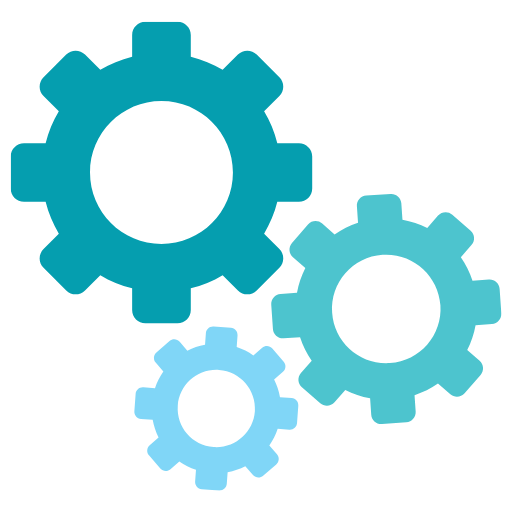About Fertility, Conception & Ovulation Calculator
What is the Ovulation Period and How Long Does It Last?
Ovulation is the part of a woman’s menstrual cycle when an egg is released from the ovary, ready to be fertilised by sperm. It’s a natural and essential process that occurs each month for most women, starting from adolescence and continuing until menopause. But what exactly happens during ovulation, and how long does this window last?
Understanding Ovulation
Ovulation occurs when one of your ovaries releases a mature egg. This typically happens around day 14 of a standard 28-day menstrual cycle. There are several ways to track when you’re ovulating, including keeping a calendar, monitoring changes in cervical mucus, or using an ovulation prediction kit.
The process of ovulation itself doesn’t last very long. In fact, the egg that’s released from the ovary has a lifespan of just 12 to 24 hours. If it isn’t fertilised by sperm within that timeframe, it will disintegrate. The uterus will then shed its lining about two weeks later, leading to menstruation.
While ovulation only happens once a month, this doesn’t mean there’s just one day when you can conceive. Sperm can live inside the female reproductive system for up to five days, so the window for conception actually spans the five days before ovulation and the day of ovulation itself.
What is the Conception Date in Pregnancy?
Conception occurs when sperm successfully meets and fertilises the egg, which usually happens in the fallopian tube. After fertilisation, the egg travels to the uterus, where it will implant into the lining and start to grow into a pregnancy. While the actual process of conception sounds simple, it can be surprisingly complex, and many factors must align for a pregnancy to happen.
Ovulation vs. Conception: What’s the Difference?
Ovulation and conception are closely linked, but they’re not the same thing. Ovulation is the part of the menstrual cycle when the egg is released, while conception refers to the moment sperm fertilises that egg. If conception doesn’t occur, the egg will break down, and the menstrual cycle will continue as usual.
In a 28-day cycle, the process looks something like this:
- Day 1: The first day of your period marks the start of your cycle.
- Day 14: Ovulation typically occurs.
- Within 24 hours of ovulation: If sperm is present, fertilisation can happen (this is when conception takes place).
- Day 21: If the egg has been fertilised and successfully implanted into the uterus, you’re now pregnant, though it can take another week before a pregnancy test can confirm it.
What is the Fertile Window?
The "fertile window" is the period when a woman is most likely to become pregnant. It generally spans the five days leading up to ovulation, the day of ovulation itself, and sometimes the day after. Understanding this window can be key for couples trying to conceive, as timing intercourse during this period increases the chances of pregnancy.
During the fertile window, your ovary releases an egg into the fallopian tube, where it waits for sperm. Since sperm can survive in the female reproductive system for up to five days, having sex during this time can increase the likelihood of fertilisation.
It’s worth noting that while many people assume ovulation always occurs on day 14 of a 28-day cycle, this isn’t always the case. Factors like stress, illness, or irregular cycles can cause ovulation to happen earlier or later than expected. That’s why tracking ovulation through other methods, like monitoring basal body temperature or using ovulation kits, can be more accurate than just counting the days.
How to Calculate Ovulation Days After a Miscarriage
If you’ve experienced a miscarriage, you might be wondering how soon your body will return to its regular cycle and when ovulation will occur again. In many cases, ovulation can resume as early as two weeks after a miscarriage, although this depends on how far along the pregnancy was.
Most women experience some bleeding for about a week following an early miscarriage, and in cases where the miscarriage happened later, bleeding may last longer. Once the bleeding stops, and your hormone levels return to normal, your menstrual cycle will typically start up again within four to six weeks.
Your cycle might be a little irregular for a few months as your body adjusts, so tracking ovulation can be a bit more challenging. However, many women find that they are able to conceive again within the first few cycles after a miscarriage.
Can You Get Pregnant a Few Days After Ovulation?
The short answer is no. Once the egg has been released during ovulation, it only survives for about 24 hours. If it’s not fertilised within this time, it breaks down, and there’s nothing left for the sperm to fertilise.
However, because sperm can live inside the female body for several days, it’s possible to become pregnant from intercourse that happened in the days leading up to ovulation. That’s why understanding your fertile window is so important if you’re trying to conceive.
How to Use an Ovulation Calculator
If you’re trying to pinpoint your fertile window, an ovulation calculator can be a useful tool. To use one, simply input the first day of your most recent period, then choose the average length of your menstrual cycle. The calculator will estimate when you’re most likely to ovulate and give you the best days for conception.
Remember, while calculators can provide a good estimate, every woman’s body is different, and factors like stress, illness, or irregular cycles can cause ovulation to occur earlier or later than expected. If you’re having trouble predicting ovulation or conceiving, it’s always a good idea to consult a healthcare professional for advice.
In summary, understanding the timing of ovulation and your fertile window can help you make informed decisions about your reproductive health. Whether you’re trying to conceive or just want to know more about your body’s natural cycles, learning to track ovulation is a useful tool.




























